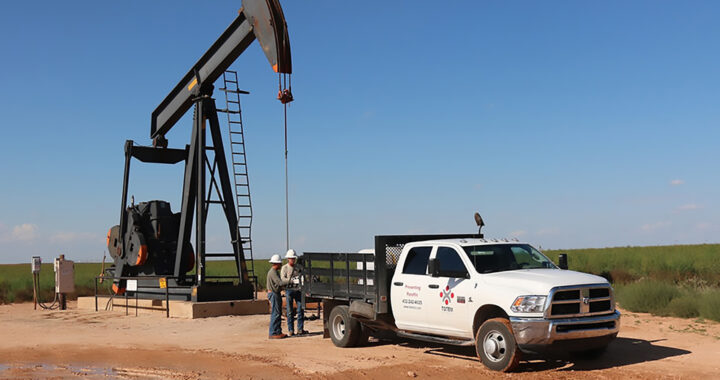The words “resources” and “reserves” are thrown out a lot whenever there are discussions about economic activities or other pertinent information involving the oil and natural gas industry. Of course, like in any other frequently associated pair of words, it is easy to confuse and interchange the two. However, the oil and gas industry has strictly remained true to the difference between resources and reserves.
Explaining the Difference Between Resources and Reserves
Oil or gas resources are different from oil or gas reserves. Take note of the following definitions:
Resources: The term “resources” strictly pertains to the oil and/or gas deposits that have been considered to be physically present in a geological formation using a particular or several methods of exploration. However, despite this deemed presence, the term encompasses discovered and undiscovered oil and gas/or deposits, as well as recoverable and unrecoverable capacities.
Reserves: The term “reserves” is a subcategory of resources. Moreover, when used in the oil and gas industry, it specifically pertains to the oil and/or gas deposits that have been regarded as technically and economically feasible to extract from a geological formation. The oil and gas reserves of a particular country represent all deposits that can be extracted effectively.
Understanding the Subcategories of Resources and Reserves
Furthermore, aside from understanding the difference between resources and reserves, it is also important to know different related terms used in the oil and gas industry. Hence, aside from reserves, there are other subcategories of resources used in the Petroleum Resources Management System of the Society of Petroleum Engineers or SPE. Below is a quick definition of each:
• Reserves: Commercially viable oil or gas deposit that is not yet recovered or extracted from a geological formation
• Production: Recovered and economically viable or commercially available oil or gas deposits extracted from any given date.
• Contingent Resources: Potentially recoverable oil and gas deposits but are still not yet commercially available because of project immaturity due to contingencies.
• Prospective Resources: Potentially recoverable oil and gas deposits but are not still commercially available due to the absence of ongoing projects.
• Unrecoverable: Proven oil and gas deposit or reserve but is not commercially viable due to being unrecoverable or impossibility of extraction.
There are also other subcategories of reserves defined and promoted by different organizations, including the U.S. Securities and Exchange Commission. There are essentially two general subcategories of oil and gas reserves. These are proven resources and unproven resources.
Proven resources pertain to oil or gas reserves that have been proven with a high level of certainty and thus, economically and commercially viable based on an analysis of scientific data and/or actual production performance. Under proven resources are more specific subsets:
• Proven developed reserves: Oil or gas reserves that are capable of being recovered and produced from existing wells using tested or advanced extraction and production methods and in consideration of projected costs.
• Proven developed nonproducing reserves: Oil or gas reserves that are in reservoirs near currently producing wells that with marginal additional investment, can become economically and commercially viable.
• Proven undeveloped reserves: Oil or gas reserves that are in reservoirs that have not yet been drilled or developed into existing wells but are still considered proven resources with economic and commercial value.
On the other hand, unproven reserves are oil or gas reserves with technical and scientific, economic and commercial, contractual, and/or regulatory uncertainty. Recovery is uncertain. Under unproven resources are more specific subsets:
• Probable: Oil or gas reserves that are suspected of being proven eventually using further gathering and analyses of scientific data and/or the implementation of existing or novel extraction and production technical capabilities—in addition to projected probable recovery of 50 percent.
• Possible: Oil or gas reserves that might exist but cannot be guaranteed with a mid-degree of certainty due to the absence of additional scientific data or lack of efficient extraction and production capabilities—in addition to a projected probable recovery of less than 10 percent.
A Note on the Difference Between Resources and Reserves
Professional organizations, as well as governmental and non-governmental organizations, have promoted and maintained lexical standards within the global oil and gas industry for the purpose of standardizing and maintaining systems for classification and regulation. These lexical standards are also critical in developing and implementing different types of oil and gas agreements.
For example, a consortium headed by SPE and composed further of the American Association of Petroleum Geologists, the World Petroleum Council, and the Society of Petroleum Evaluation Engineers have maintained a classification system called the Petroleum Resources Management System.
Other organizations use different criteria for classifying oil and gas deposits. The Committee for Mineral Reserves International Reporting Standards or CRIRSCO focuses its classification on scientific insights produced by subject-matter experts. The United Nations Framework Classification for Fossil Energy and Mineral Reserves or UNFC focuses its classification on socioeconomic viability, project feasibility, and geological knowledge dimensions.
Nevertheless, from the aforementioned, it is also important to highlight the fact that the difference between resources and reserves is not only applicable to the oil and gas industry but also to the mining industry, especially in systems used for classifying the availability of minerals within a particular geological formation.
